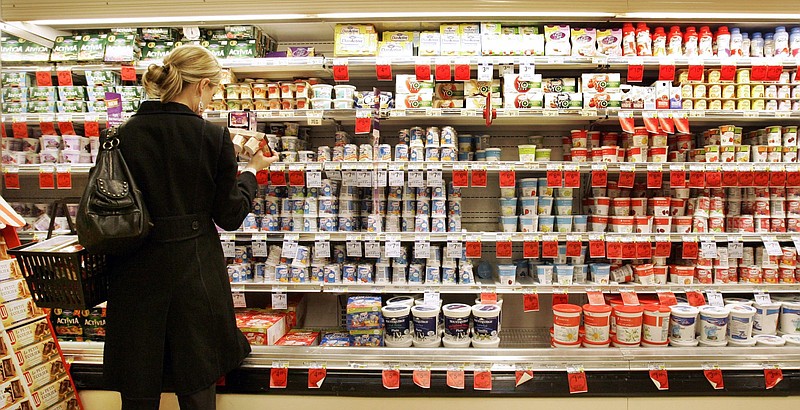Food protectionism is on the rise in the developing world as governments try to safeguard local supplies, and the effects are threatening to spill over into richer economies.
Countries are restricting exports to cope with high prices that have been exacerbated by Russia's invasion of Ukraine. Malaysia just announced a ban on chicken exports, causing consternation in Singapore, which gets a third of its supplies from there. India has moved to curb wheat and sugar shipments, Indonesia has limited palm oil sales, and some other nations have issued grain quotas.
The poorest countries are most vulnerable to surging food prices and shortages, but wealthier economies aren't immune. For example, almost 10 million Britons cut back on food in April amid a cost-of-living crisis. U.S. restaurants are shrinking the size of their portions, while France has pledged to issue food vouchers to some households.
Around 30 countries have taken steps to restrict food exports since the start of the war in Ukraine, with agricultural protectionism at the highest level since the food price crisis in 2007 and 2008, said Sabrin Chowdhury, head of commodities at Fitch Solutions.
"Protectionism will definitely continue in 2022 and rise in the coming months, exacerbating food security risks for the world's most vulnerable," she said.
A United Nations gauge of world food prices has jumped more than 70% since mid-2020 and is near a record after the invasion of Ukraine choked off crop exports and rattled supply chains. More food protectionism could push costs even higher, further hurting consumer purchasing power and creating headaches for central banks trying to curb inflation while maintaining growth.
The risks are skewed toward more agricultural export curbs in Asia, said Sonal Varma, chief economist for India and Asia ex-Japan at Nomura Holdings. That could exacerbate price pressures globally, she said.
In the latest example of protectionist measures in the region, India is set to cap sugar exports at 10 million tons for the market year that runs through September. It appears to be very precautionary, given domestic supplies are abundant. German Agriculture Minister Cem Oezdemir said earlier this month that he and his Group of Seven counterparts had discussed "with concern" India's move to halt wheat exports and Indonesia's restrictions on palm oil.
"Lower-income households in the U.K. and the U.S. are struggling to feed themselves," said Sonia Akter, an assistant professor specializing in agriculture at the Lee Kuan Yew School of Public Policy at the National University of Singapore. Rising prices "will disproportionately affect poor people who spend a large share of their income on food," she said.
Some of the most important staples have become a lot more more expensive. Benchmark wheat futures have surged by around half this year, palm oil has risen almost 40%, while a UN gauge of dairy prices prices is up 14%.
Export restrictions aren't just bad news for importing countries. They also penalize farmers in the producing nations by stopping them from taking advantage of high international prices, said David Adamson, a senior lecturer at the Centre for Global Food and Resources at the University of Adelaide.
"Protectionism is the worst thing to do for food security as it prevents the markets from working to smooth things out," he said.
India is the second-largest producer, after Brazil, and biggest consumer of sugar in the world, according to the All India Sugar Trade Association. It's the second-largest exporter of sugar. The export curbs are its first in six years.
India exported a record 7 million metric tons in the 2021-22 financial year, which ended in March. That was up from 620,000 tons in 2017-18.
Estimates vary but the country is expected to produce more than 30 million tons in this growing season, and domestic consumption is estimated at about 28 million tons, with domestic reserves at roughly 8 million tons.
In the current June-October sugar season, contracts for export of about 9 million tons have been signed and 7.8 million tons were already exported, the government said in a statement.
Sugar mills and exporters will need to government approval for exports beginning next month, it said.
Sugar consumption tends to shoot up during India's major festival season from September to November.
Sugar prices have remained relatively stable but retail inflation rate surged to an eight-year high of 7.8% in April. The government has announced tax cuts on petrol, diesel, coking coal to try to curb inflationary pressures.
Information for this article was contributed by Low De Wei of Bloomberg News (WPNS) and Ashok Sharma of The Associated Press.

